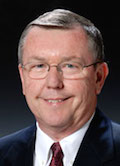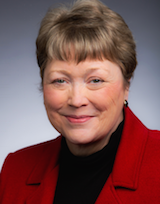By Ronald Williamson and Barbara R. Blackburn

Solitary leadership doesn’t work very well. No leader knows everything or has the answer to every question, challenge or concern. The issues facing schools are increasingly complex, and the most skilled leaders recognize the importance of tapping into the knowledge and skills of others to support their work.
 Every school has formal and informal leaders. The principal, assistants, and grade or team leaders hold formal roles. But on every staff there are countless others who are seen as informal leaders because of their content knowledge, their ability to form positive relationships, or their ability to analyze and resolve challenging problems.
Every school has formal and informal leaders. The principal, assistants, and grade or team leaders hold formal roles. But on every staff there are countless others who are seen as informal leaders because of their content knowledge, their ability to form positive relationships, or their ability to analyze and resolve challenging problems.
A skilled school leader systematically builds leadership capacity among the staff. Not everyone wants to be a “formal” leader, but everyone can lead. Cultivating this capacity among the staff expands participation, empowers, increases collective knowledge, increases motivation and improves morale.
Most teachers are motivated by a deep desire to become better teachers and to work with their colleagues to improve their schools. It’s important to tap into that motivation to support your efforts at improving your school.
What a Leader Can Do
Expanding leadership capacity doesn’t occur simply by tapping a teacher to head a new committee. Rather it comes from identifying talented people and their interests and strengths and providing opportunities for them to use those talents.
Leadership emerges in multiple ways and not from being designated a formal leader. It may emerge from participation in targeted professional development, from work on a collaborative team, or from investigating a problem and researching possible solutions.
5 Moves to Expand Your School Leadership
School leaders can grow and nurture leadership capacity by doing these five things.
1. Know Your Teachers and Their Work
It’s important to get out of the office and get to know what’s going on in classrooms as well as grade level or team meetings. Becoming engaged in the authentic work of teachers by being present when they’re teaching, collaborating, and problem-solving will provide a leader with insight into the frustrations of teachers, the joys of their work, and the challenges they face.
Being able to speak from “authentic” experience rather than from your office experience allows you to match talent with interests. Skilled teachers want to work on “real” instructional problems and to have a principal with “real” experience. Being able to use the “real” language will be valued.
2. Move Beyond Formal Leaders
When expanding capacity, it’s important to think beyond the formal leaders. Most teachers don’t want to be involved in managerial tasks like ordering supplies or building schedules. What they value is the chance to work on authentic instructional issues. That’s motivating.
Don’t assume that the person who is skilled at managerial tasks will be the best fit for every leadership role. Be confident in tapping informal leaders to assume responsibility for leadership responsibilities.
3. Create Welcoming Spaces
Establish healthy boundaries for communication. Model confidentiality and respect a teacher’s privacy when they share a problem or concern. Teachers want to solve problems, but first the problem has to be identified. Too often teachers are reluctant to share concerns because they worry they will blamed.
You want people to step forward and identify problems. That’s the only way they can be addressed. If you tap one of your teachers for a leadership role, applaud their initiative rather than criticize the outcome, particularly if it doesn’t necessarily align with what you might do. Not all leaders lead the same way.
4. Ask Difficult Questions
A leader shouldn’t wait for problems to be identified by others. A leader’s job is not just to solve problems but also to identify problems by asking difficult questions. Challenge long standing norms. Ask why instructional challenges are handled the way they are. This can stimulate new thinking and provide an opportunity for teachers to step forward and investigate and address the issue. Encourage that sort of investigation.
5. Provide Professional Development
Too often professional development (PD) is something done to fulfill a district mandate or contractual requirement. When building leadership capacity, it’s important to tailor the PD to the interests and needs of individual teachers. We understand the need for school-wide training on issues, but supplement that with an opportunity for specific, targeted PD.
Tailored PD might involve online activities, attendance at a conference, job shadowing or even participation on a district-wide committee. PD is not just formal presentations or seminars. Recognize the power of action-oriented PD aligned with teacher interests to motivate teachers and improve morale.
Assess Yourself
Take a few moments to reflect on how well you build leadership capacity in your school. Once you have rated yourself, you can consider how to build on your strengths and what areas need additional focus.
Teachers want to provide meaningful help
Schools thrive when there are multiple opportunities for leadership. Teachers want to help with school improvement and assist in solving complex and challenging instructional issues. Provide opportunities of formal and informal leadership. Get to know your teachers, moving beyond formal leaders, by creating a welcoming environment, asking difficult questions, and providing individualized professional development.
 Dr. Ronald Williamson is Professor Emeritus of Educational Leadership at Eastern Michigan University. He is a former principal, central office administrator and executive director of the National Middle School Association (now AMLE). The author of numerous books on leadership, Ron is the co-author with Barbara R. Blackburn of 7 Strategies for Improving Your School (2019) and Improving Teacher Morale and Motivation: Leadership Strategies that Build Student Success (2024), both from Routledge/Eye On Education.
Dr. Ronald Williamson is Professor Emeritus of Educational Leadership at Eastern Michigan University. He is a former principal, central office administrator and executive director of the National Middle School Association (now AMLE). The author of numerous books on leadership, Ron is the co-author with Barbara R. Blackburn of 7 Strategies for Improving Your School (2019) and Improving Teacher Morale and Motivation: Leadership Strategies that Build Student Success (2024), both from Routledge/Eye On Education.
Dr. Barbara R. Blackburn, a “Top 10 Global Guru in Education,” is a bestselling author of over 30 books and a sought-after consultant. She was an award-winning professor at Winthrop University and has taught students of all ages. In addition to speaking at conferences worldwide, she regularly presents virtual and on-site workshops for teachers and administrators.
Barbara is also the author of Scaffolding for Success (Routledge/Eye On Education, 2025) and many other books and articles about teaching and leadership. Visit her website and see some of her most popular MiddleWeb articles about effective teaching here.


